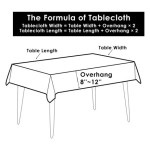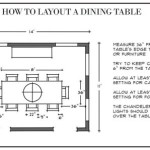Round Table Breadsticks Recipe: A Detailed Guide
Round Table Pizza is renowned not only for its pizzas but also for its delectable breadsticks. This article provides a comprehensive guide to recreating Round Table-style breadsticks at home, outlining ingredients, preparation steps, and baking instructions.
The recipe aims to emulate the soft, flavorful, and slightly chewy texture that characterizes Round Table's breadsticks. Detailed instructions ensure consistent results, allowing home bakers to achieve a similar quality to the restaurant offering.
The success of this recipe hinges on precise measurements and adherence to the outlined procedures. While slight variations may occur due to differences in oven performance and ingredient quality, the core principles remain essential for achieving the desired outcome.
Key Ingredient Breakdown and Their Roles
The foundation of any successful bread recipe lies in understanding the role of each ingredient. Precision in measurement is crucial for achieving the desired texture and flavor profile.
Flour, specifically all-purpose flour, forms the structural backbone of the breadsticks. Its gluten content, when hydrated and worked through kneading, creates the elasticity that allows the dough to rise and maintain its shape during baking. Bread flour can also be utilized, resulting in a slightly chewier texture.
Yeast, either active dry or instant, is the leavening agent responsible for the dough's rise. Active dry yeast requires proofing in warm water before addition, while instant yeast can be added directly to the dry ingredients. The yeast consumes sugars in the dough, producing carbon dioxide gas, which inflates the dough and creates a light and airy texture.
Water hydrates the flour and activates the yeast. The water temperature is critical: too cold, and the yeast will not activate; too hot, and the yeast will be killed. Lukewarm water, typically between 105°F and 115°F (40°C and 46°C), is recommended.
Sugar provides food for the yeast, accelerating its activity and contributing to the dough's rise. Sugar also adds a subtle sweetness to the breadsticks, balancing the savory elements.
Salt controls the yeast's activity, preventing it from rising too quickly. Salt also strengthens the gluten structure, improving the dough's elasticity and texture. Furthermore, it is a crucial component in enhancing the overall flavor of the breadsticks.
Oil, such as olive oil or vegetable oil, adds moisture to the dough, resulting in a softer texture. Oil also contributes to the breadsticks' overall flavor and helps to prevent them from becoming too dry.
Garlic powder and onion powder provide the signature savory flavor characteristic of Round Table breadsticks. The combination of these two ingredients creates a complex and aromatic profile.
Dried oregano and dried basil contribute additional herbal notes, complementing the garlic and onion powder and enhancing the overall flavor complexity. These herbs are commonly found in Italian-American cuisine and contribute to the authenticity of the breadstick flavor.
Butter or margarine, brushed on top of the baked breadsticks, adds richness and a glossy sheen. Melted butter contributes a superior flavor, enhancing the overall experience. The butter also helps the toppings adhere to the breadsticks.
Grated Parmesan cheese, sprinkled on top of the breadsticks, adds a salty and savory finish. The cheese melts slightly during the final stages of baking, creating a flavorful crust.
Detailed Preparation and Baking Instructions
The preparation process involves several stages, each crucial for achieving the desired outcome. The following steps provide a detailed guide to making Round Table-style breadsticks.
First, if using active dry yeast, proof it by dissolving it in warm water along with a teaspoon of sugar. Allow it to sit for 5-10 minutes until foamy. This step ensures the yeast is active and viable.
In a large mixing bowl, combine the flour, remaining sugar, salt, garlic powder, onion powder, dried oregano, and dried basil. Whisk the dry ingredients together to ensure even distribution.
Add the proofed yeast mixture (or instant yeast, if using) and oil to the dry ingredients. Gradually add the remaining warm water while mixing on low speed with a stand mixer fitted with a dough hook or by hand.
Knead the dough until it forms a smooth and elastic ball. This process typically takes 5-7 minutes in a stand mixer or 8-10 minutes by hand. The dough should be slightly tacky but not sticky. If the dough is too sticky, add a tablespoon of flour at a time until the desired consistency is achieved.
Place the dough in a lightly oiled bowl, turning to coat. Cover the bowl with plastic wrap or a damp towel and let it rise in a warm place for 1-1.5 hours, or until doubled in size. This allows the gluten to relax and the yeast to produce carbon dioxide, increasing the dough's volume.
Preheat the oven to 375°F (190°C). Lightly grease a baking sheet or line it with parchment paper. This prevents the breadsticks from sticking and ensures easy removal.
Punch down the risen dough to release the trapped air. Turn the dough out onto a lightly floured surface and divide it into 12-16 equal portions.
Roll each portion into a rope approximately 8-10 inches long. Place the breadsticks on the prepared baking sheet, leaving some space between each one.
Cover the breadsticks with plastic wrap or a damp towel and let them rest for 10-15 minutes. This allows the dough to relax slightly, resulting in a more tender texture.
Bake the breadsticks for 12-15 minutes, or until they are golden brown. The baking time may vary depending on the oven; monitoring the breadsticks' color is essential to prevent burning.
While the breadsticks are baking, melt the butter or margarine in a microwave or saucepan. Once the breadsticks are removed from the oven, brush them generously with melted butter.
Sprinkle the breadsticks with grated Parmesan cheese. The residual heat from the breadsticks will melt the cheese slightly, creating a flavorful topping.
Serve the breadsticks immediately while they are warm and soft. They are best enjoyed fresh out of the oven.
Troubleshooting and Potential Adjustments
Despite following the recipe precisely, variations in ingredients, equipment, and environmental conditions can lead to unexpected results. Understanding common issues and potential adjustments can improve the baking outcome.
If the dough does not rise, the yeast may be inactive or the water temperature may have been too cold or too hot. Verify the yeast's expiration date and ensure the water temperature is within the recommended range. Also, ensure that the rising environment is warm and draft-free.
If the dough is too sticky, gradually add flour, one tablespoon at a time, until the desired consistency is achieved. Overly sticky dough can be difficult to work with and may result in flat or misshapen breadsticks.
If the breadsticks are too dense, the dough may not have been kneaded sufficiently. Ensure that the dough is kneaded for the recommended amount of time, until it forms a smooth and elastic ball. Also, ensure adequate rising time.
If the breadsticks are browning too quickly, reduce the oven temperature slightly. The effectiveness of ovens can vary, requiring slight adjustments to the baking temperature to prevent burning.
If the breadsticks are too dry, increase the amount of oil in the dough. The addition of oil contributes to moisture retention, resulting in a softer texture.
If the flavor is not strong enough, increase the amount of garlic powder, onion powder, dried oregano, and dried basil. Adjusting the seasoning levels allows for customization to individual preferences.
The use of bread flour instead of all-purpose flour will produce a chewier breadstick. While this is a viable alternative, it is important to be aware of its effect on the final product.
Experimentation with different types of cheese, such as Asiago or Romano, can add unique flavor variations to the breadsticks. The type of cheese used can significantly impact the overall taste profile.
Adjusting the baking time slightly can affect the texture of the breadsticks. Baking for a shorter period will result in a softer breadstick, while baking for a longer period will result in a crispier breadstick.

Roasted Garlic Breadsticks

Copycat Round Table Garlic Parmesan Twists Gluesticks Blog

Copycat Round Table Garlic Parmean Twists

Copycat Round Table Garlic Parmesan Twists Gluesticks Blog Twisted Recipes Bread Homemade

Copycat Round Table Garlic Parmean Twists

Copycat Garlic Twists From Round Table Tiktok

Parmesan Garlic Twist
.JPG?strip=all)
Parmesan Cheese Twists

Roasted Garlic Breadsticks

Garlic Bread W Cheese Round Table Hilton Hawaiian Village Restaurant In Honolulu Hi
Related Posts








